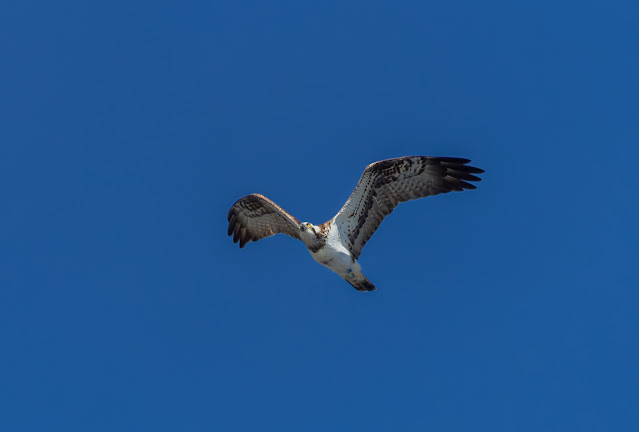Friday, 9th May 2025, 🌤️ 20c ~ Wind SSE @ 2mph ~ My final outing before heading to Poland for twelve days on Sunday was a morning visit to Muir of Dinnet.
It was a beautiful day with clear skies and a gentle breeze. The drive to The Muir of Dinnet takes about 40 minutes. This national nature reserve covers 1,166 hectares, stretching from the River Dee to Culbean Hill. It includes a variety of habitats such as dry heath, raised bog, woodland, and two freshwater lochs: Loch Kinord and Loch Davan.
Today, I went for a clockwise walk around the woodlands with a stop to look over Loch Davan. Almost immediately after entering, I heard a Willow Warbler and Tree Pipit singing, with the latter perched at the very top of a tree.
 |
| Tree Pipit in full voice. |
About ten minutes into my walk, I met Daryl Short, the warden from Forvie Nature Reserve, who was overseeing a small group of visitors. After a brief chat, I continued on my way but stopped a few yards later when I spotted a female
Common Redstart. I spent a little time with the group, trying to point out the bird, but everyone's attention shifted to a male
Common Redstart that someone else had spotted. Lovely to see my first pair of the year. I decided to move on, and just as I turned, a
Woodcock flew out from the undergrowth. Fortunately, a few members of the group were lucky enough to see it before it disappeared. It was a great start to my walk.
 |
| A Tree Pipit in parachuting song flight! |
When I reached the ruined farmhouse at Old Kinord, I came across a family of
Mistle Thrush and managed to gain a few shots of two rather large-looking youngsters.
 |
| Young but chunky Mistle Thrush. |
While here, a male
Common Redstart began to sing, and I sat for a while listening and taking a few photographs. You can't beat a male
Common Restart, such a stunning bird.
 |
| Male Common Redstart at Old Kinord |
By the time I reached Loch Davan, I had recorded a further five
Tree Pipits and three
Common Redstarts, and although I heard my first
Cuckoo of the year, I didn’t manage to see it. In fact, I heard two
Cuckoos today but didn’t see either.
Loch Davan used to be home to a pair of Great Crested Grebes, but sadly, since they were predated a few years ago, there have been no sightings of them. As far as I know, there are currently no locations in Aberdeenshire where these beautiful birds can be found. I spent half an hour overlooking Loch Davan, where I spotted a pair of Goldeneye, three Mute Swans, and, on the bank opposite, a single Curlew and an Oystercatcher. There were a few Barn Swallows and as I was watching a couple of Common Sandpipers flying around in chase, I noticed an Otter near the centre of the loch, and as I looked up, an Osprey was passing overhead, pretty surreal!
 |
| A pair of Common Sandpipers at Loch Davan. |
 |
| Osprey at Loch Davan. |
Out over the mountain tops, a distant large raptor caught my eye, being mobbed by a few
Buzzards. This turned out to be a
White-tailed Eagle, and I managed a few distant (very distant) record shots, one of which I'll post at the end.
After running into Mark Sullivan and Rob Leslie halfway through my walk, I had a quick catch-up with them before continuing along the high track above Loch Kinord. I was mainly hoping to spot some Adders, but unfortunately, I didn’t see any today. However, I did encounter my fourth Common Redstart, which was a singing male. On my return to the car park, I noted several new additions to my list: a Garden Warbler, Chiffchaff, Common Whitethroat, Song Thrush, Siskin, and a Great Spotted Woodpecker. Forty-four bird species today, plus the addition of various numbers of Butterflies: Pearl-bordered Fritillary, Comma, Orange-Tip, Peacock, Small Tortoiseshell and Green-veined White. A very productive morning's work.
 |
| Pearl-bordered Fritillary |
 |
| Otter at Loch Davan |
 |
| Magnifying Glass time! White-tailed Eagle! |












































